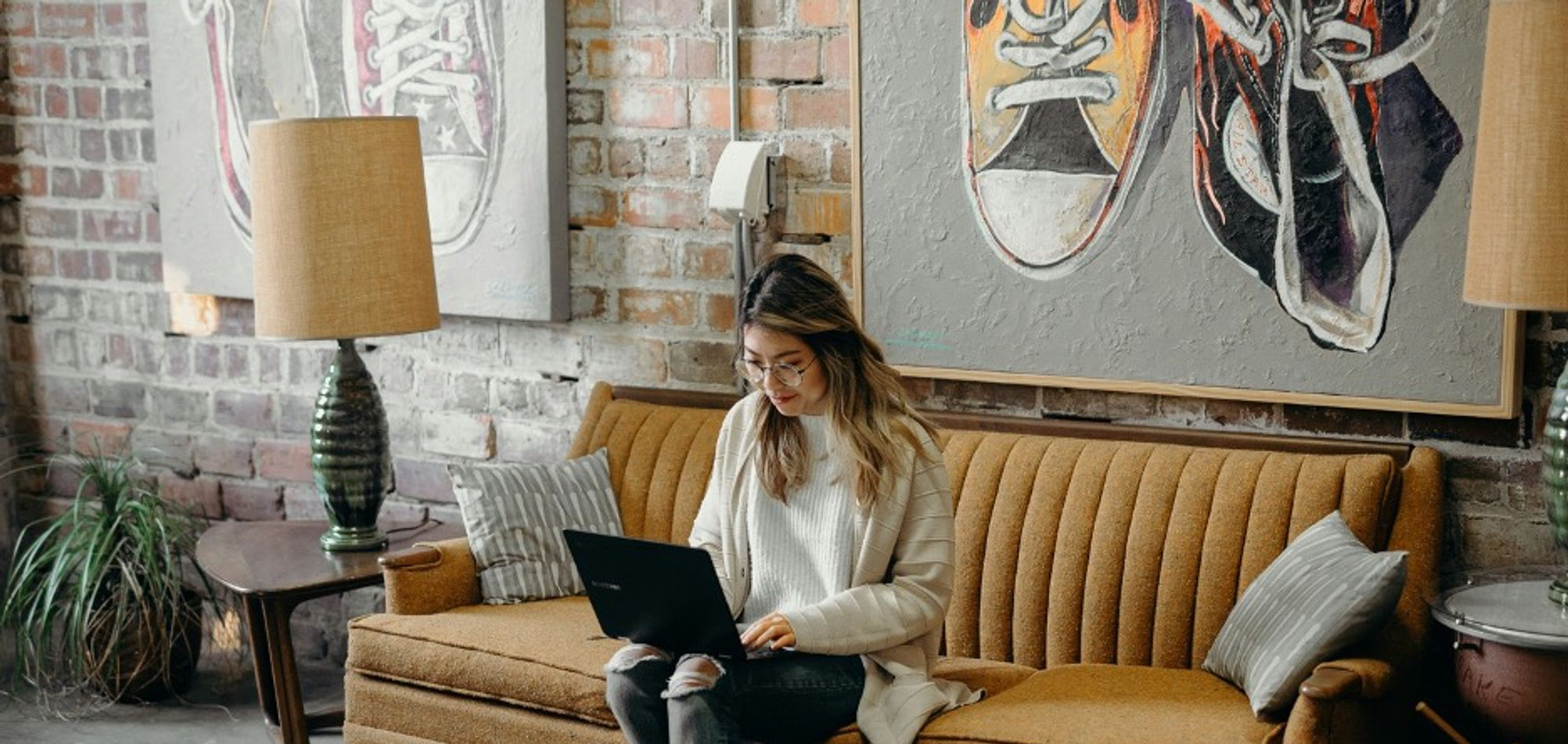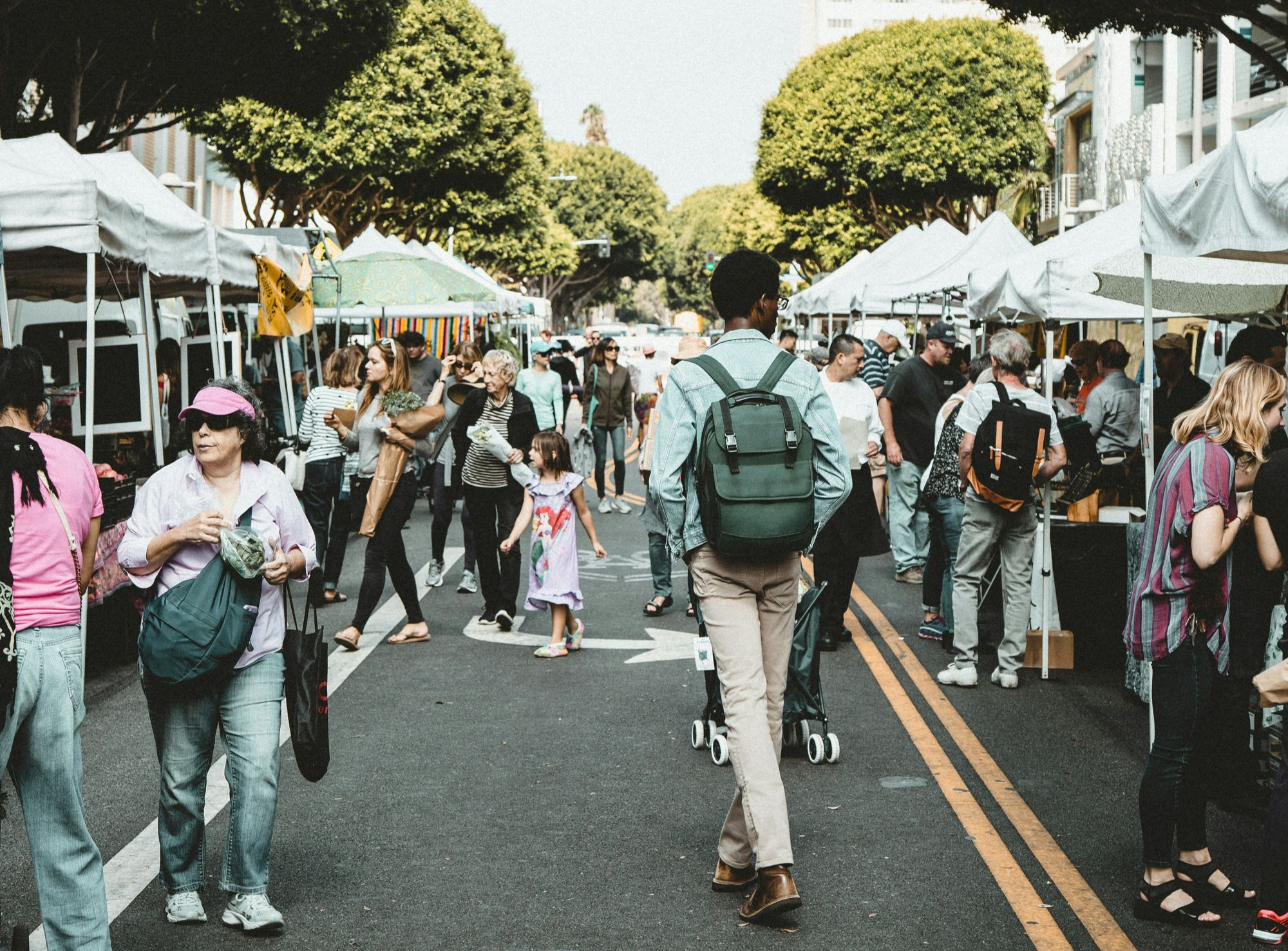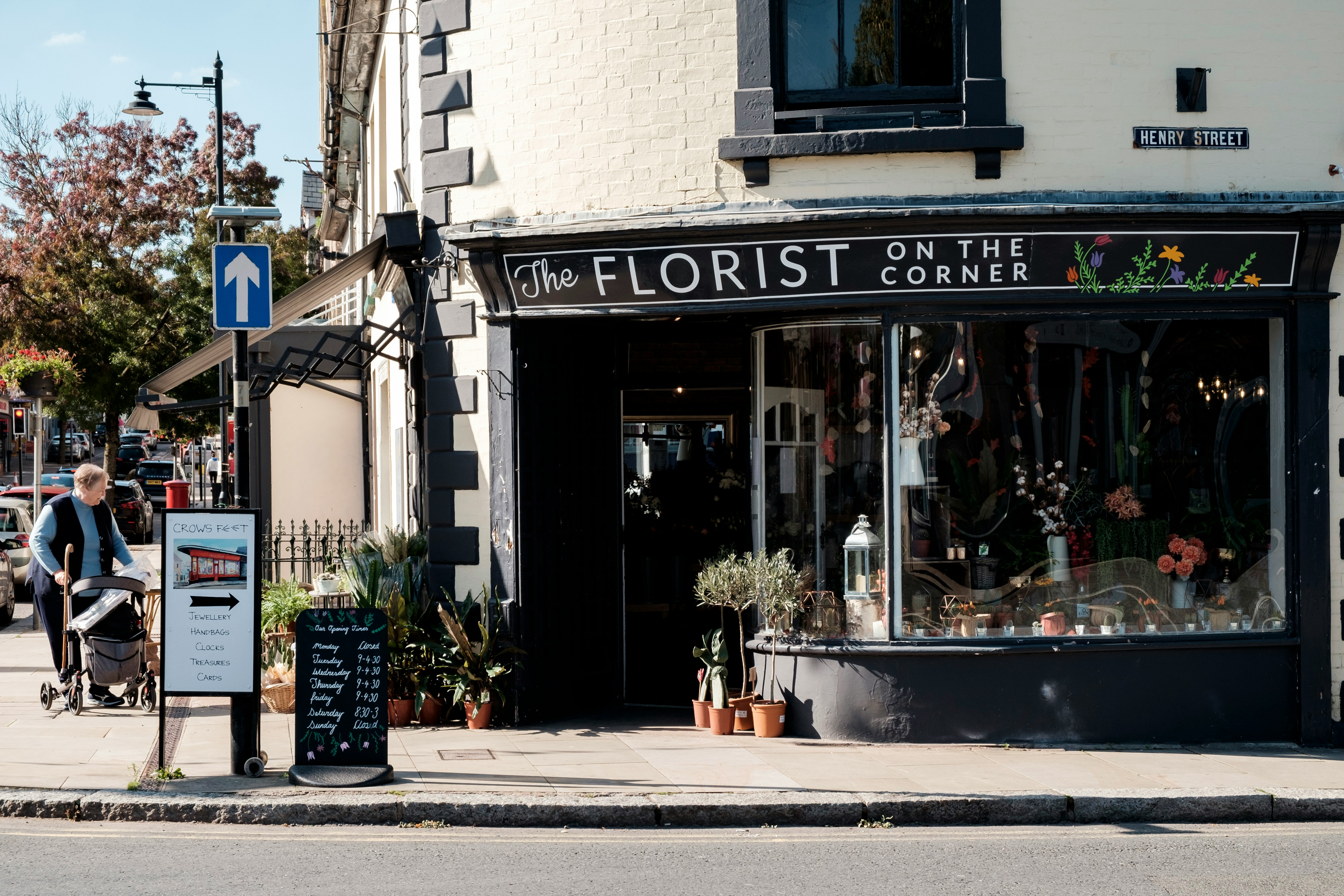Photo by Ilse Orsel on Unsplash
In today's fast-paced digital world, it's easy to get caught up in the whirlwind of online digital marketing strategies. However, amidst this digital focus, it's crucial not to overlook the treasure trove lying right within our community—the local market. There's something uniquely special about standing before a piece of art, seeing the brushstrokes up close, and connecting on a personal level to an artist and their process. This direct interaction adds a layer of appreciation and value that digital images can't fully convey.
So, how do you sell your art locally? The answer lies in leveraging local networks, participating in community events, and embracing the power of word of mouth. Artists can explore setting up booths at local art fairs, markets, and exhibitions, or partner with local businesses and galleries to display their work. Selling art locally is not just about transactions; it's about building relationships, sharing stories, and becoming a beloved part of the community's culture. Here are our top ten tips for selling your art locally.
1. Do the Prep work before approaching your local market.
Start by having something of value to offer. That might require you to grow your skills so you can create something buyers want and something you will be proud of. Consider taking the Milan Institute two-month online beginner program. Entering your local market with confidence is key. The first step is to build a strong body of work that showcases your unique style and artistic voice. This not only gives potential buyers a clear understanding of your art but also helps in building your brand as an artist.
High-quality photographs of your work are essential for promotional materials and for use on social media platforms. Photographing art can be intimidating but with smartphones, getting professional high-quality photographs of your art is possible. You might be overwhelmed with how to sell your art but having a brand, website, and great photos of your body of work, will be helpful and foundational when trying to get into new locations. Even if you are an emerging artist, you can still present yourself as a professional, as you are getting established. Have an elevator pitch ready for what you create. Know your brand and be able to speak about your creations with confidence. Practice your pitch in front of a mirror, with friends or family. Ask for honest feedback so you can grow.
2. Identify your personal market & identify potential new markets.
Your personal market consists of the potential buyers you currently have access to. You have a bigger local market than you realize. Make a list. Start with your friends, family, and acquaintances. List all clubs you or your family are part of. Do you have gym buddies? Are you part of a church or religious group? Do you have kids in sports or community activities? Do you frequent a coffee shop or restaurants where you are recognized? Do you belong to a neighborhood association? List all these connections, even if they feel distant. You can become known as “the artist” among your friends, family, and acquaintances.
Next, identify new markets to connect with. Think outside the box. Your particular region is unique and has places where your art can be displayed and celebrated. Try joining your local art co-op, art association, or art league. Artists love to support other artists. Do you identify with a particular people group, race, or sex? Look for specialty groups such as the Italian American Club or an animal rescue association. Many churches and business associations have yearly conferences. Explore what it would look like to be a vendor or paint live for these events. Join a TED talk program and pitch your art in a presentation or partner with your local theater group to integrate your art into their next show. If possible, get on a local non-profit organization board.
Once you have identified your current personal market and potential new markets, you need to do something with those connections. Make a business plan. Give away business cards, stickers, or offer special discounts. You can become actively a part of these new communities or just make a connection with leaders. Consider donating to their events or cause in exchange for a percentage of sales or exposure. With most of these relationships, you are playing the long game. Once you have made a connection in your community, stay consistent in that relationship. Your ability to stay in connection can be a reflection of the trustworthiness of you and your art.
Photo by Brooke Cagle on Unsplash
3. Embrace regional customs
Every region is known for something. Whether it's mountains, wine, the Blueberry Festival, its high population of Norwegian people, etc. Festivals, tourist attractions, landmarks, and local trends are what make people love where they live. Embrace and honor these as an artist. Create relevant art for your region. Become known as a “Fill-in-the-blank of your city” artist.
Tourists will buy your stuff and locals will feel connected to your work. Some artists feel like creating touristy pieces is not authentic. You can have your art honor your region’s traditions and culture. If everyone is making wine art, make wine art in your style with your own flare. Creating these trending pieces could help you get your foot in the door of potential shops or galleries. Ask your local boutiques and galleries what kind of art sells and what they are looking to carry in stock.
Photo by Dane Deaner on Unsplash
4. Be a weekend warrior
Many artists see the benefit of art shows, vendor markets, and farmer’s markets and others walk away discouraged. Beware of low-performing events and high vendor fees. Do your homework before signing up for these events. Go to these events ahead of time and see if people are purchasing and what they are purchasing. Ask other artists in your area what events they do. Join vendor groups on Facebook and see where other vendors are having success. Try to find art shows and exhibitions that fit your style and brand.
You may do an event and find you were there only to network or connect with new potential collectors. Bring business cards and set up an email list to collect information from curious patrons. Follow up promptly with an email including a special event discount or promotion. Set yourself apart from the other vendors by having different price point items or consider painting live to attract people passing by
5. Get your art into a local gallery
Get your art into your local galleries starts with having sellable artwork. Think about the relationship from the gallery’s perspective. What do you bring to the table for the gallery? Go to these galleries and their events. Study their other artists, are you a good fit for that gallery? Create art that sells. Once you get into a reputable gallery, you can use that as leverage to get into other galleries. Before pitching your work, try to connect with artists and curators on social media and LinkedIn who are in your desired gallery. Prepare a cohesive portfolio on your website or in catalog form.
6. Be a Philanthropist
Participating in charitable art initiatives offers another avenue of community engagement. When choosing a charity to support, you can connect with like-minded individuals who share your values. These collaborations can lead to lasting partnerships and give you a greater purpose in your work. For collectors, purchasing art that benefits charity adds an extra layer of meaning to their acquisitions, knowing that their investment extends beyond aesthetic appreciation to real-world impact. Beyond offering your work to charities, you can offer your time by teaching a class or creating a public mural. There is no better way to advertise your art than having a large mural in the center of town or on the side of your kid’s elementary school. Add a QR code or social media handle for added exposure.
Photo by Brooke Cagle on Unsplash
7. Collaborate to increase your market
Build relationships with other artists, business owners, and local influencers. Collaborate on a project to increase your potential market. Their market plus your market doubles the market potential. Chronicle your projects together and tag each other on social media accounts. Share with other artists when you hear of potential opportunities and celebrate when other artists succeed. Contact local media and suggest doing a live demonstration of your craft. The worst that could happen is they say “no”. Some maker spaces have open studio time at a low cost. You can bring your work and connect. If there is nothing like this where you live, get a studio or shared studio space with another artist.
8. Go local online
Hit your local market by interacting and building relationships on social media with galleries, shops, other artists, art collectors, local media, and local influencers. Follow relevant hashtags like #fillinyourcity #fillinyourcityart etc. Always tag your art with locations, especially if you are creating art of local landmarks and attractions, or when painting in public spaces around your region. Join local groups on social media, be active in those groups, and get known as an artist. For example, if you are part of a local BMX Facebook group, post your BMX-themed art. Local online marketplaces and community boards can be invaluable for reaching people in your area looking to support local artists.
Photo by Krisztina Papp on Unsplash
9. Target local business partners & government entities
Consider partnering with local businesses such as cafes, restaurants, and boutiques to display your art. This arrangement can benefit both parties by enhancing the ambiance of their space while providing you with exposure to new clientele. High-quality photographs of your work are essential for promotional materials. Use this guide for photographing your art. Create a catalog of your best pieces and drop it off with real estate stagers.
As a valued customer, your local bank may consider displaying your art in their lobby. Submit your work to local periodicals or newspapers. Approach your library to teach a class or do a demonstration and negotiate wall space to display your portfolio. Any location in your community that has wall space or classroom space is a potential place to display or teach a class. Students and student’s parents are all potential buyers.
Some high-end consignment stores may be willing to house your work for a commission. Once you have scored that precious wall real estate, have clear pricing, and make purchasing easy. Consider posting QR codes to direct buyers to one-click purchasing on your website, Venmo, or Cash apps. Learn how to price your art for your local market. Offer a local discount or free delivery if purchasing in your area.
10. Be willing to pivot
Don’t let your fear of rejection prevent you from getting out there to sell your art locally. Just try something unprecedented. If it doesn’t work, pivot, and try something else. Fear can lead to creative paralysis. Artists often fear failure (which sometimes presents itself as perfectionism). We also fear what others think. Fear of success, rejection, lack, abandonment, and fear of responsibility are common fears for those actively pursuing their destiny.
Fear can powerfully influence productivity by stopping us from taking risks and embracing imperfection. Fear is a gargoyle at the gate of your destiny, and it will do anything to stop you from elevating your life and fulfilling your purpose.
Learn more about overcoming resistance in this inspiring conversation on the Milan Art Podcast: How to Overcome Resistance as an Artist.
Take a risk. Approach your podiatrist to paint a series of animal feet to cover his waiting room walls. Try converting all of your art to stickers and ask to get them in your local coffee shop. See if your church or a coworking space will have a month-long show in their lobby. Unable to show in a gallery? Create your own pop-up vendor event with other artist friends. Do the Milan 100-painting challenge in one week and use those smaller pieces to drop free art around your town (always include a business card and QR code if possible). Do live painting in public places and bring business cards (make sure you comply with local vendor laws). Face paint for parties, paint people’s pets, or offer to live paint at a wedding.
The possibilities are limitless. Get around people and make art. If a door is closed in your face, there is another one waiting for you. Just pivot and move forward.
Conclusion
Through persistence, networking, and leveraging both physical and digital spaces, you can successfully sell and share your art with your community. It all begins with having sellable art. You can’t achieve success unless you have sellable art first.
If you want to learn how to create art that you love and others love, it starts with developing your skills. To become the artist that you know you can be, we have created a one-year program that will help you do just that. Sign up for Milan Art Institute’s Mastery Program. You can join our pre-enrollment with no obligation. Joining The Mastery Program pre-enrollment gives you access to exclusive introductory materials. Join pre-enrollement here.
Why Milan Art Institute?
Your Path to Artistic Mastery Starts Here
At the Milan Art Institute, we blend passion with expertise to help you unlock your artistic potential. Our Mastery Program and online art classes are designed for artists at all levels, providing step-by-step guidance and personalized support from seasoned professionals. Whether you're looking to refine your skills, discover new techniques, or build your artistic career, our courses offer the tools and insights you need. Join our vibrant community and transform your art journey with tailored instruction and a supportive environment.
What Our Students Are Saying


